
The high-speed motor test bench is a specialized system designed to evaluate and validate the performance of high-speed electric motors under various operating conditions. It consists of several key components, including a dynamometer, real-time controller, data acquisition system, and various sensors.
Electric drivetrain development is faster, but still complex due to diverse motor types and designs. Econotest offers specialized dynamometers, software, and tools for testing electric vehicle drivelines. High-speed motor test benches evaluate performance, NVH, EMC, and durability of electric propulsion systems. These testing capabilities help manufacturers meet strict quality and performance standards for electrified drivetrains. Econotest’s solutions address challenges in testing EESM, ASM, and PMSM motors in various driveline configurations. Comprehensive testing ensures electric vehicle drivetrains are certified quickly and to high-quality standards. Advanced tools and procedures from Econotest supports rapid development of modern electric propulsion systems.
We’re able to do the ODM/OEM with customization of Brand, Color,Packaging, Size and Parameters.
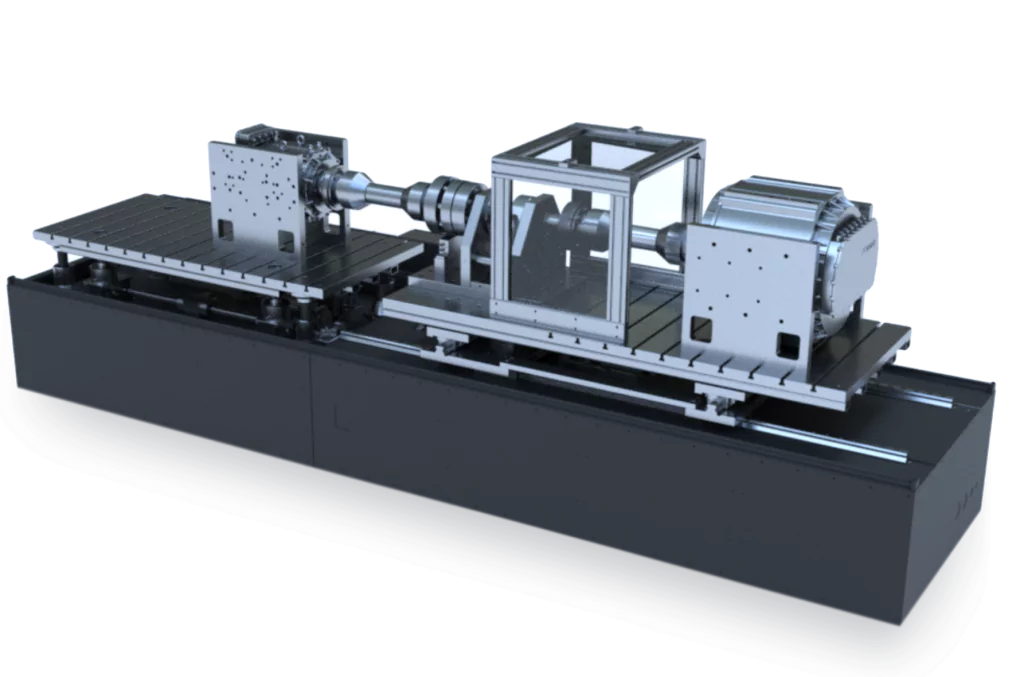
The high-speed motor test bench‘s real-time dynamic control system uses a real-time controller to achieve speed and torque control, simulating actual load conditions. The main control system can communicate with and control environmental chambers, power analyzers, cooling systems, and EUTs. The data acquisition system collects signals from torque sensors, vibration sensors, temperature sensors, pressure sensors, and other sensors, transmitting them at high speed to the main control system. Sensor data can be displayed, saved, and processed in the software interface
High-Speed High-Power Motor Test System This system is suitable for various high-speed motor applications, including new energy vehicle drive motors, high-speed air compressor motors, and high-speed magnetic levitation motors. The installation platform can be designed according to the motor under test, with options for end flange or base mounting structures
Motor Test Bench Selection Specifications The dynamometer is selected based on the characteristic curve of the motor under test. It typically uses four-quadrant inverter control and can operate in both motor and generator states. The system can be optionally equipped with high and low-temperature environmental chambers, battery simulators or bidirectional DC power supplies, power analyzers, and cooling systems.
Main parameters are as follows, all Parameters can be customized by requirement :
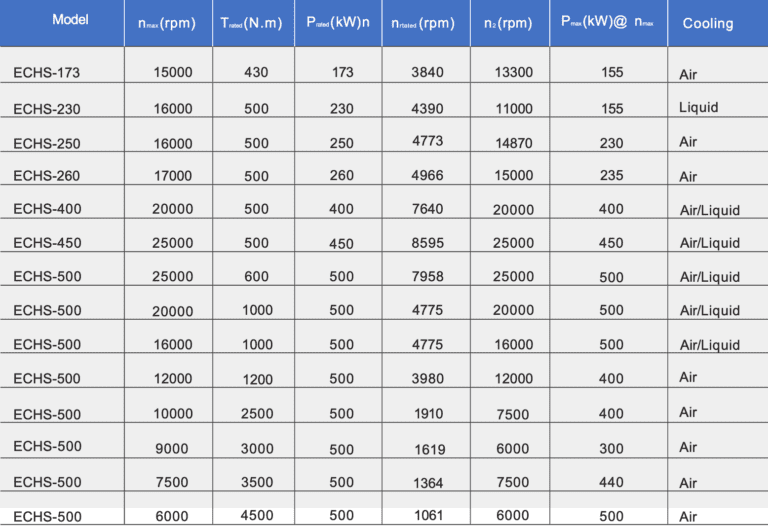
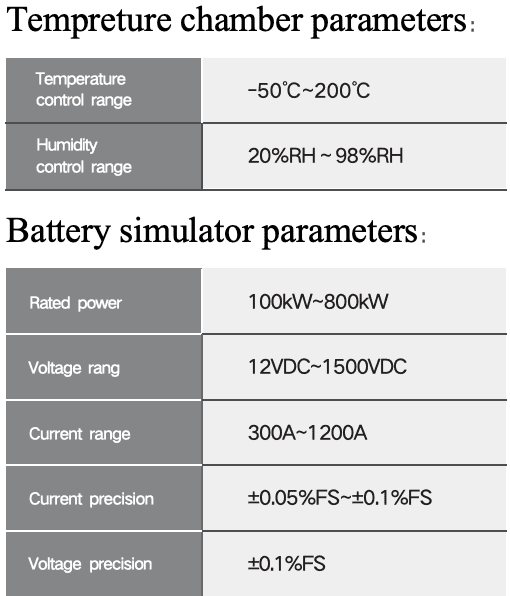
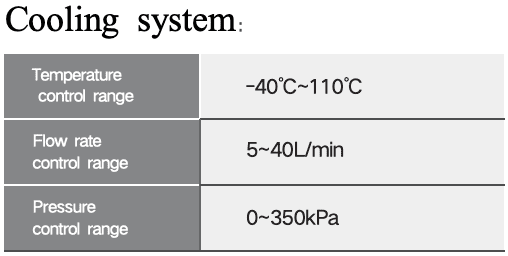
This system is used for testing small power high-speed motors, such as small power aviation generators, robot motors, small high-speed compressor motors, and machine tool spindle motors. The installation platform can be designed according to the motor under test, with options for end flange or base mounting structures
The test bench is selected based on the characteristic curve of the motor under test. It typically uses four-quadrant inverter control and can operate in both motor and generator states. The system can be optionally equipped with high and low-temperature environmental chambers, battery simulators or bidirectional DC power supplies, small power adjustable DC power supplies, power analyzers, and cooling systems. Depending on noise requirements, water-cooled or air-cooled dynamometers can be selected
1.Specification with air-cooling:
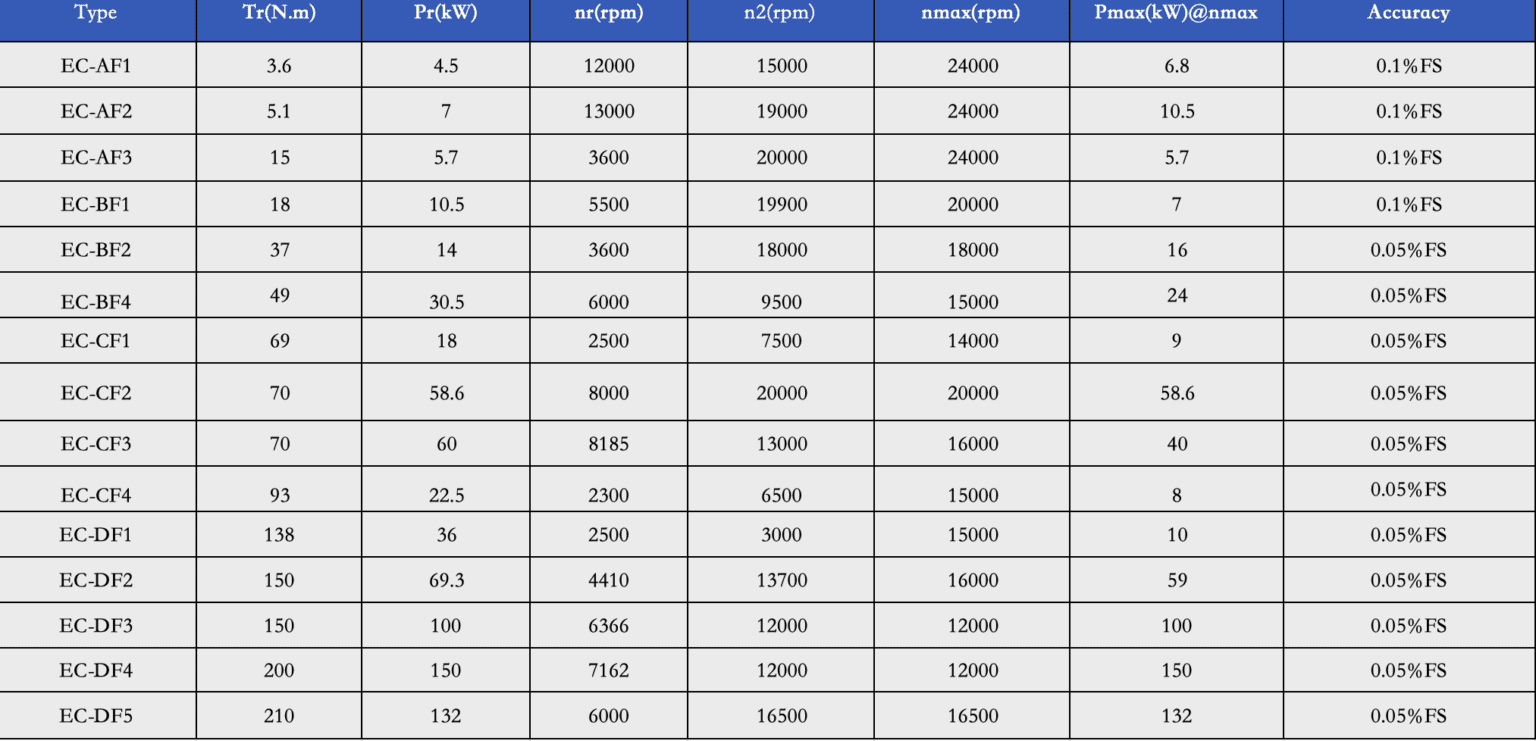
2.Specification with Liquid-cooling:
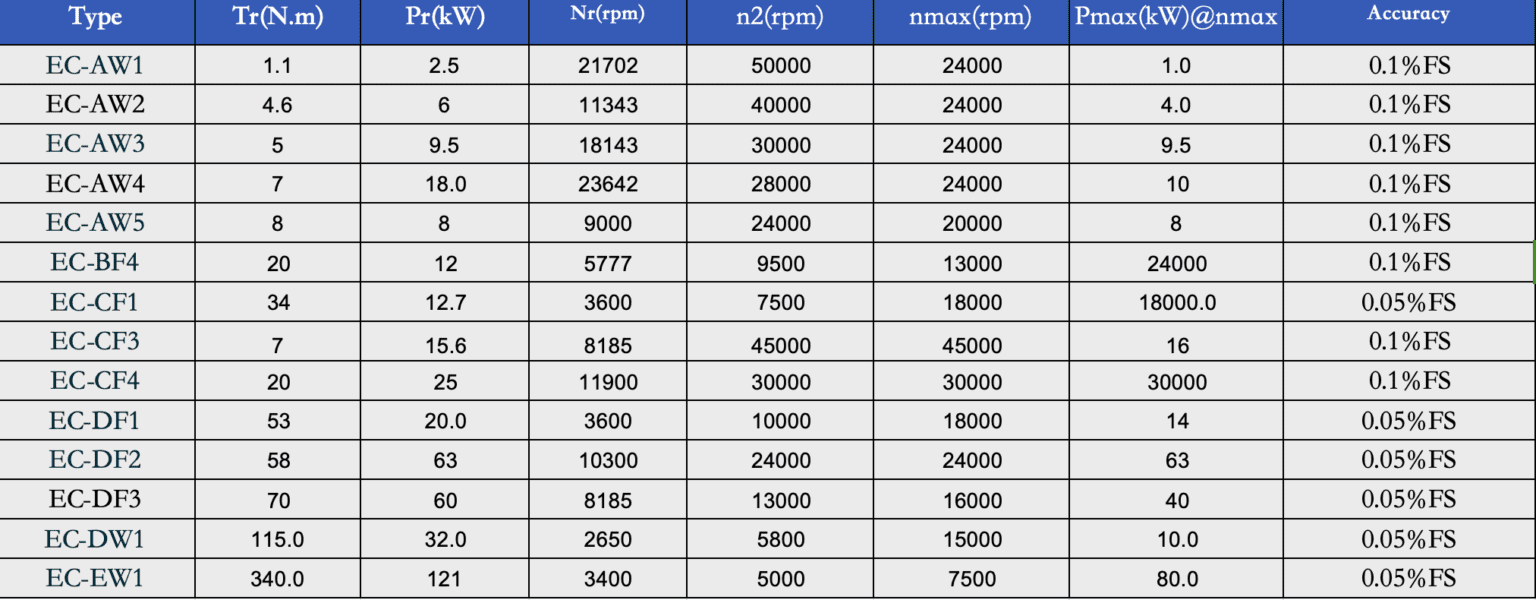
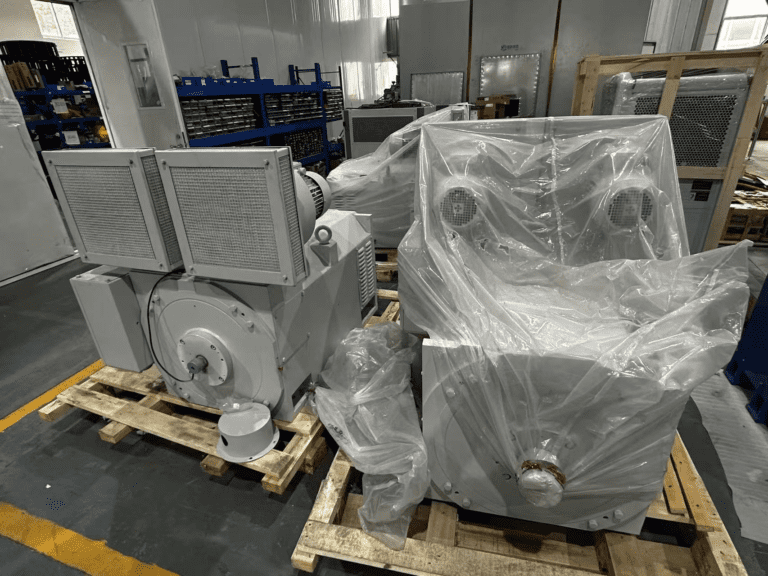
Purpose and Application: The high-speed motor test bench is designed to test motors that operate at speeds exceeding 60,000 rpm. It is commonly used in applications like high-speed compressor motors. Our test system can handle motors with speeds up to 165,000 rpm.
System Components: The high-speed motor test system is composed of several key components, including:
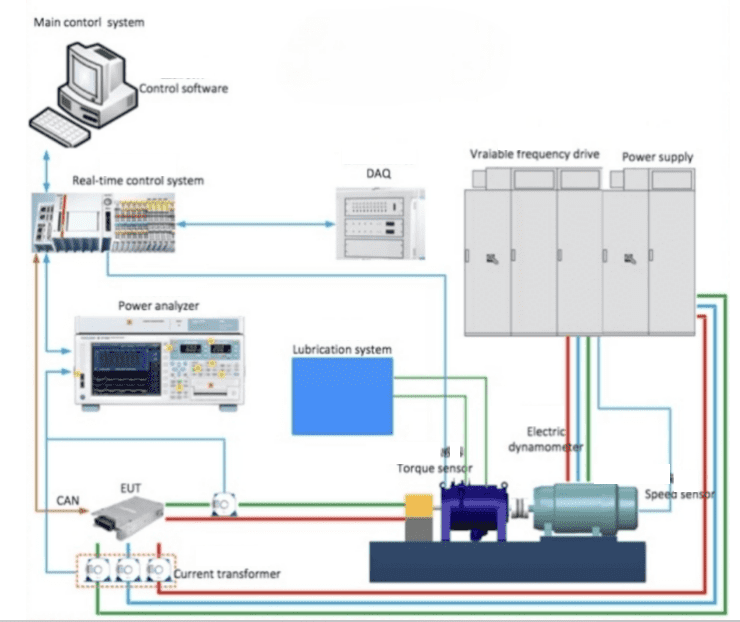
High-Speed Gearbox: The ultra-high-speed gearbox is a two-stage power distribution gearbox with coaxial input and output shafts. Key specifications include:
Additionally, the gearbox includes a lubrication pumping station provided by the supplier, which is adjusted prior to shipment to ensure optimal performance.
Test Piece Torque Measurement: Torque is measured directly from the test piece to avoid transmission losses that could affect the data. Unlike traditional methods where a torque sensor is placed on the low-speed end of the system, this direct measurement provides more accurate readings for high-speed motors.
Test Piece Connection: To accommodate different test specimens and ensure ease of tool replacement, the system includes a torque flange, a transitional spline flange, and a spline between the bearing housing and the motor’s input shaft. This design helps to reduce torsional vibrations and ensures reliable connections during testing.
Real-Time Dynamic Control System: The motor test bench features a sophisticated real-time control system that allows for precise speed and torque control through a real-time controller. It simulates actual loading conditions and can communicate with various components like the environmental chamber, power analyzer, cooling system, and the Equipment Under Test (EUT). The system collects data from a wide range of sensors, including torque, vibration, temperature, and pressure sensors, and transmits it rapidly to the main control system. The collected data is then displayed, saved, and processed through the software interface.
Key Technical Indicators:
Main Test Items:
Key Technologies of the Motor Test Bench:
4.1 High-Performance Electric Dynamometer: The dynamometer, a core component, features a low moment of inertia, minimal vibration, compact size, and high acceleration performance. It also offers efficiency benefits, along with real-time monitoring of bearing conditions, temperature, and windings.
4.2 High-Dynamic Real-Time Control System: The test bench uses an embedded real-time controller for high-dynamic control, supporting EtherCAT/Profinet communication. It boasts a no-load dynamic response time of under 10ms, allowing it to meet complex variable conditions during testing.
4.3 Electrical Parameter Measurement System: The system uses high-precision power analyzers and current transformers for accurate measurements of efficiency, actuel, voltage, and other motor and controller parameters. It simultaneously measures torque and speed.
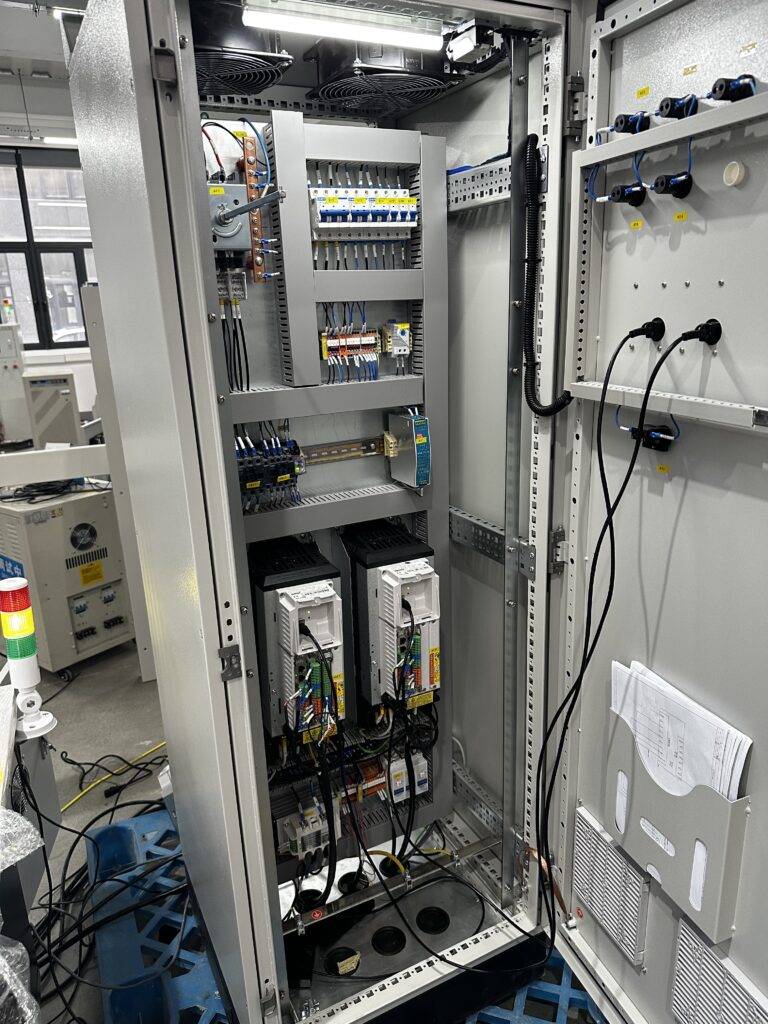
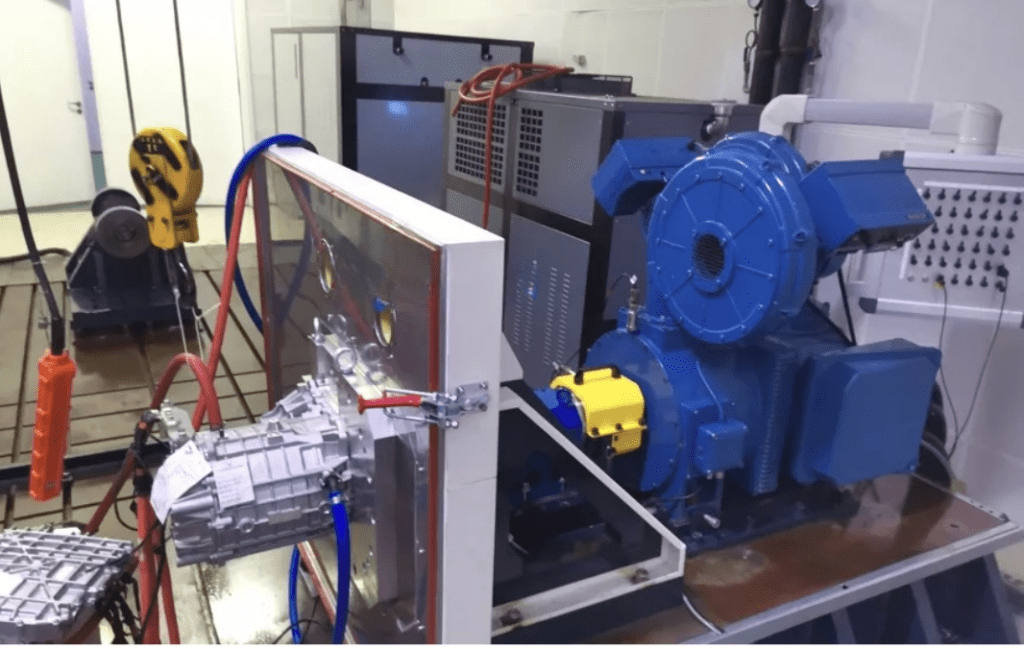
4.4 Precision Mechanical Structure: Components are machined with high precision, ensuring that shaft coaxiality is better than 0.02mm, providing optimal alignment and performance during testing.
4.5 Precision High-Speed Bearing Support: High-speed angular contact ceramic ball bearings are used, with spring preload to maintain bearing stability. The temperature rise does not exceed 35°C, and vibration speed stays under 2.5mm/s (RSM) at maximum speeds. The bearings are maintenance-free and capable of operating continuously for up to 20,000 hours.
4.6 Safety Protection Measures: The system is equipped with multiple layers of safety protections:
4.7 Easy Installation: The L-shaped mounting bracket is designed with a positioning stop and mounting surface, allowing for easy and quick installation of the test motor. It also features an interface for high and low temperature chambers, ensuring that the test motor remains coaxial with the shaft system, even when temperature changes occur. Vibration sensors monitor motor vibrations in real time.
4.8 Complete Monitoring Software: The motor test bench software has a modular architecture, enabling users to customize test parameters and processes. It supports speed and torque control, temperature and speed monitoring, and includes safety features like automatic calibration and limit monitoring. The software supports both open-loop and closed-loop control.
4.9 Shaft Alignment Measures: For high-speed shafting, the system ensures shaft coaxiality is no greater than 0.02mm using laser alignment tools and fine-tuned mechanical structures.
4.10 Shafting Dynamic Balance Treatment: The shaft system is balanced to a G1 accuracy level, and dynamic balance is performed onsite using specialized tools. Counterweight features are integrated into the flange design, and an on-site dynamic balancer ensures proper balance during operation.
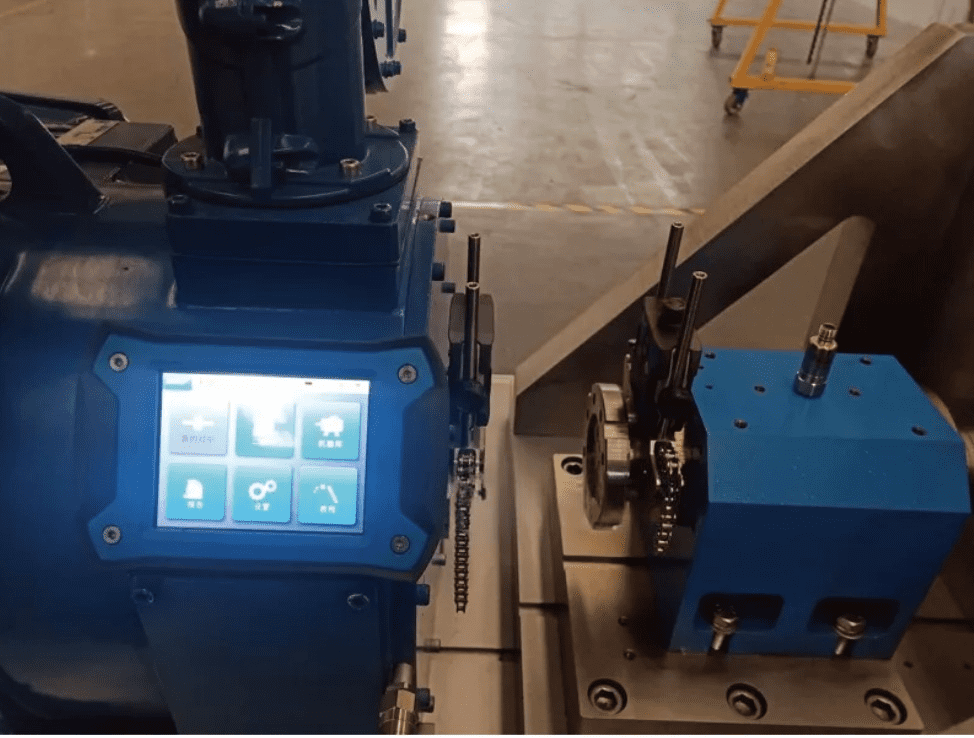
Pour toute question ou assistance, veuillez nous contacter par e-mail à info@econotests.com.
Nous visons à répondre rapidement.
Besoin d'une assistance immédiate? Appelez-nous au +86 156 1877 0706.
Notre équipe est prête à vous aider.
Nous vous invitons à visiter notre bureau situé au 3F, Bâtiment 2, NO.511, route Xiaowan, Fengxian, Shanghai, Chine.
Let's discuss your needs in person.

© 2025 Shanghai EconoTechnologie Co., Ltée. Tous droits réservés.
Favoriser l’innovation grâce à des solutions de test fiables.